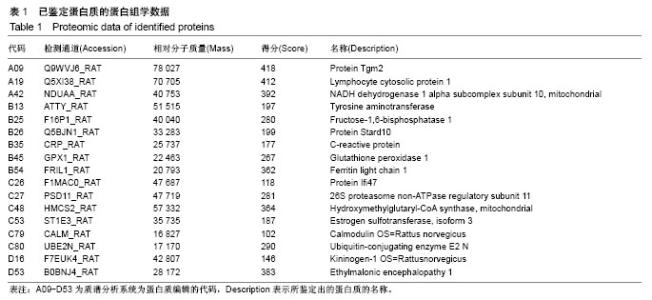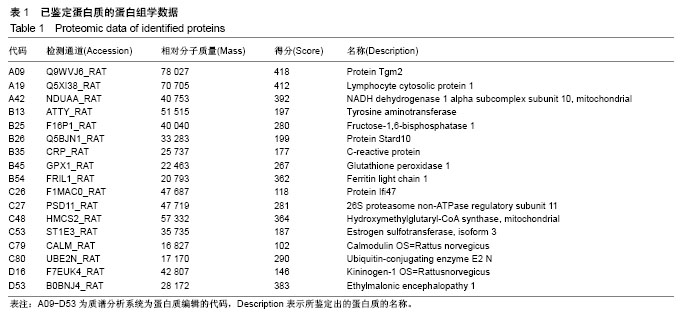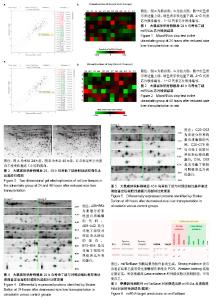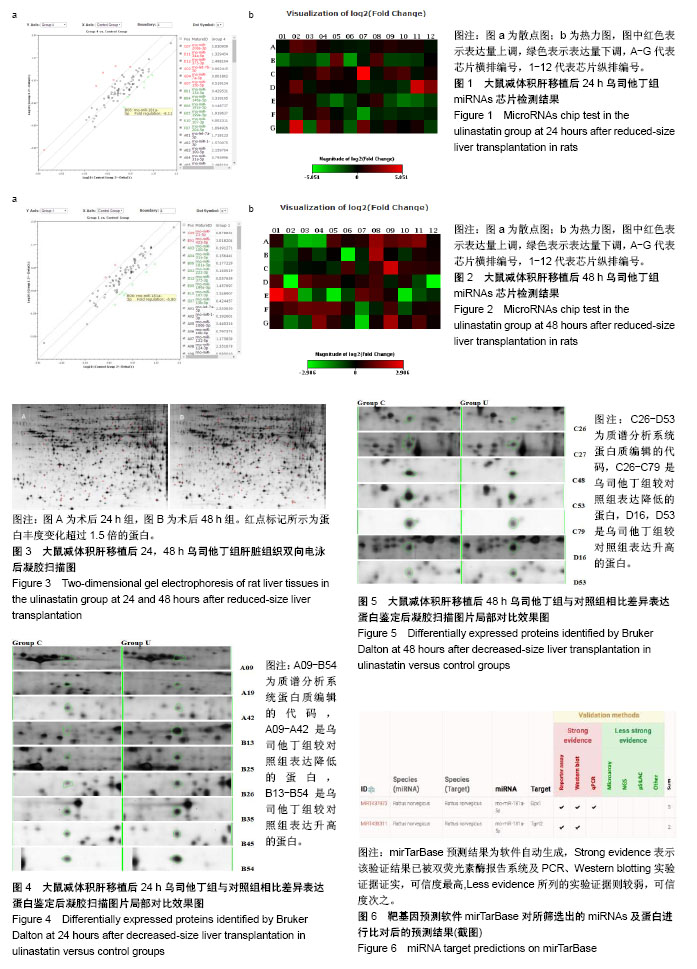| [1] Okuhama Y,Shiraishi M,Higa T, et al.Protective effects of ulinastatin against ischemia- reperfusion injury.Res. 1999; 82N1:34-42. [2] Yang YL, Li JP, Xu XP, et al. Protective effects of tumor necrosis factor alpha antibody and ulinastatin on liver ischemic reperfusion in rats. World J Gastroenterol. 2004;10: 3161-3164. [3] Tan J,Zhu YL,Zhou RS, et al.Effect of Ulinastatin on liver regeneration and energy metabolism after major hepatectomy combined with ischemia reperfusion injury.Journal of Xi’an Jiaotong University(Medical Science).Vol.35 No.1 Jan.2014.[4] Lu J, Chen YP, Wan R, et al. Protective effects of ulinastatin on acute liver failure induced by lipopolysaccharide/ Dgalactosamine. Dig Dis Sci. 2012;57:399–404.[5] 高红强,李志强,王海富,等.减体积肝移植模型大鼠肝脏组织miRNAs表达谱变化[J].中国组织工程研究,2016,20(5): 712-717.[6] Zhang L,Song AL,Chen X, et al.Effect of ulinastatin donor-pretreatment on liver graft during cold preservation in rats. Chin Med J(Engl).2011;124(4):574-580. [7] 李江,刘静,侯宇,等.30%小体积肝移植大鼠模型的手术技巧及改良[J]. 中国组织工程研究,2011,15(18): 3341-3346.[8] Kamada N, Calne RY. Orthotopic liver transplantation in the rat. Technique using cuff for portal vein anastomosis and biliary drainage.Transplantation.1979;28(1):47-50.[9] Kamada N,Calne RY.A surgical experience with five hundred thirty liver transplants in the rat. Surgery. 1983;93(1 Pt 1): 64-69.[10] Jie Lu,Yong-Ping Chen,Rong Wan,et al.Protective Effects of Ulinastatin on Acute Liver Failure Induced by Lipopolysaccharide/D-Galactosamine.Dig Dis Sci.2012;57(2): 399-404.[11] Wang JX,Chang C,Ma J,et al.Statistical strategies for selection of differentially expressed proteins based on mass spectrometry technology.Scientia Sinica Vitae.2015;45:347-358. [12] Wang L,Huang H,Fan Y, et al.Effects of downregulation of microRNA-181a on H2O2-induced H293 cell apoptosis via the mitochondrial apoptotic pathway.Oxid Med Cell Longev. Oxid Med Cell Longev. 2014;2014:960362. [13] Selzner M,Kashfi A,Cattral MS.Live donor liver transplantation in high MELD score recipients.Ann Surg.2010;251(1): 153-157. [14] Reichman TW,Katchman H,Tanaka T,et al. Living donor versus deceased donor liver transplantation:a surgeon- matched comparison of recipient morbidity and outcomes. Transpl Int.2013;26(8):780787. [15] Lei J,Yan L,Wang W.Comparison of the outcomes of patients who underwent deceased-donor or living-donor liver transplantation after successful downstaging therapy. Eur J Gastroenterol Hepatol.2013;25(11):1340-1346.[16] Li X, Li J, Ou YJ, et al.Hepatoprotective effect of ulinastatin in a rat model of major hepatectomy after obstructive jaundice. Dig Dis Sci. 2015;60(6):1680-1689. [17] Taie S,Yokono S,Ukki M,et al.Effects of Ulinastatin on ATP,intracellular pH,and intracellular sodium transients during ischemia and reperfusion in the rat kidney in vivo.J Anesth. 2001;15(1):33-38.[18] Nakatsuka H,Sato Y,Yamamoto S,et al.Analysis of liver injury following adult small-for-size grafts in liver transplatatation. Transplant Proc.2003; 35(1): 80-81. [19] Tanaka K,Ogura Y.“Small-for-size graft” and “Small-for size syndrome” in living donor liver transplantation . Yonsei Med J.2004;45(8): 1089-1094. [20] Gonzales E,Julien B,Serriere-Lanneau V,et al.ATP release after partial hepatectomy regulates liver regeneration in the rat. J Hepatol.2010;52(1):54-62.[21] Honda HM,Korge P,Weiss JN.Mitochondria and ischemia-reperfusion injury.Ann N Y Acad Sci. 2005;1047: 248-258.[22] Marquez RT,Wendlandt E, Galle CS,et al.MicroRNA-21 is upregulated during the proliferative phase of liver regeneration, targets Pellino-1,and inhibits NF-kappa B signaling.Am J Physiol Gastrointest Liver Physiol.2010; 298(4):G535-G541.[23] Ng R,Song G,Roll GR,et al.A microRNA-21 surge facilitates rapid cyclin D1 translation and cell cycle progression in mouse liver regeneration.J Clin Invest. 2012;122(3): 1097–1108.[24] Roush S, Slack FJ .The let-7 family of microRNAs. Trends Cell Biol.2008;18: 505–516.[25] Chen H,Sun Y,Dong R,et al.mir-34a is upregulated during liver regeneration in rats and is associated with the suppression of hepatocyte proliferation.PLoS One. 2011; 6(5):e20238. [26] Jiang W, Kong L, Ni Q, et al.miR-146a Ameliorates Liver Ischemia/Reperfusion Injury by Suppressing IRAK1 and TRAF6. PLoS One.2014;9(7):e101530.[27] Chen Q, Kong L, Xu X, et al.Down-regulation of microRNA-146a in the early stage of liver ischemia-reperfusion injury.Transplant Proc. 2013;45(2):492-496.[28] Jia XQ,Cheng HQ,Qian X, et al. Lentivirus-mediated overexpression of microRNA-199a inhibits cell proliferation of human hepatocellular carcinoma.Cell Biochem Biophys. 2012; 62(1):237-244.[29] Korhan P,Erdal E,Atabey N. MiR-181a-5p is downregulated in hepatocellular carcinoma and suppresses motility, invasion and branching-morphogenesis by directly targeting c-Met. Biochem Biophys Res Commun. 2014;450(4):1304-1312. [30] Yan Y,Jiang W,Tan Y, et al.hucMSC Exosome- Derived GPX1 Is Required for the Recovery of Hepatic Oxidant Injury. Mol Ther.2017;25(2):465-479. |



